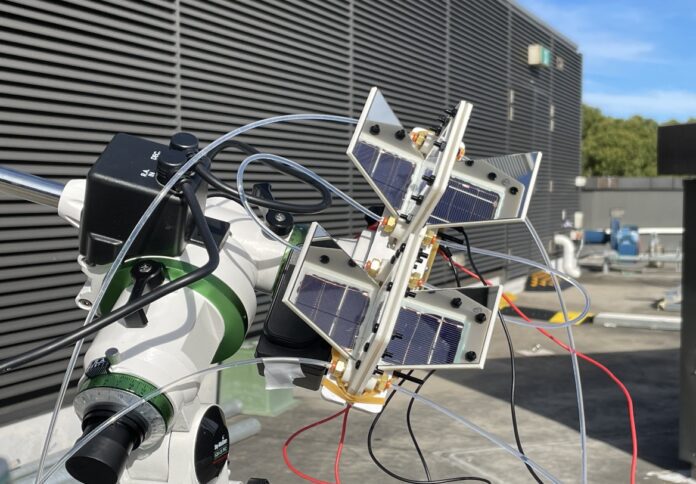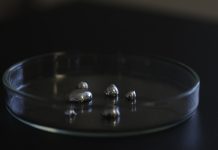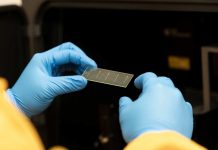
Engineers from UNSW Sydney have converted a traditional silicon solar panel into a device that produces ammonia in a significantly more environmentally friendly way.
UNSW Scientia Professor Rose Amal, in collaboration with Professor Xiaojing Hao, and their teams, has developed a method to generate ammonium ions from nitrate-containing wastewater using a specially designed solar panel that functions like an artificial leaf.
The process, known as photoelectrocatalytics (PEC), utilises a nano-structured thin layer of copper and cobalt hydroxide on the panel that acts as a catalyst to assist the chemical reaction needed to produce ammonium nitrate from the wastewater.
The research team, which includes lead author Chen Han and Dr Jian Pan (a DECRA Fellow), has built a 40 cm² artificial leaf system on the roof of the Tyree Energy Technologies building at UNSW.
This system has been able to produce ammonium ions sufficient for 1.49 m² of cropland.
The results encourage further development of the system’s size, aiming to create ammonia without associated greenhouse gas emissions.
“Traditional ammonia production requires high temperatures – around 400 to 500 degrees Celsius – and high pressure, historically necessitating the use of fossil fuels,” said Prof Amal from the School of Chemical Engineering.
“This system works at ambient conditions and just uses sunlight to produce ammonium from nitrate-containing wastewater, which is an important chemical used in fertiliser.
“We think this new technology could be implemented on a relatively small scale in agricultural locations to produce ammonium onsite, which would decentralise the production process and further reduce CO2 emissions that are associated with the transportation process,” the professor noted.
In a real leaf, photosynthesis is how plants use sunlight, water, and carbon dioxide to create oxygen and energy in the form of sugar.
In this new photoelectrocatalytic process, the solar panel acts like an artificial leaf to use sunlight and nitrate-containing wastewater to create ammonium nitrate.
“We are combining photovoltaics’ expertise from UNSW’s School of Photovoltaics & Renewable Energy Engineering, and our expertise in chemical engineering, to take nitrate waste and turn it into an important commodity in the form of ammonia,” said lead author Chen Han.
“We’ve developed a very efficient catalyst with special nanostructures and incorporated that with a traditional silicon solar panel, resulting in a highly effective process.
Han explained, “Our findings provide a clean, efficient, and cost-effective solution for utilising solar energy and chemical wastes to produce ammonia and other value-added products. You do not need a high concentration of ammonia in fertiliser, so we believe the amounts of ammonia we are producing using our system make it a viable application in the real world, although we definitely still have some ways to further improve it.”
The researchers hope that generating ammonium from the wastewater will allow the processed water to be used for crop irrigation, further helping them grow.
“It’s important to acknowledge that the wastewater we convert isn’t coming directly from municipal waste or runoff – it still needs to be processed first to filter out the organic matters and particulates,” said Prof Amal.
“But we are hopeful that once we have generated ammonium from the nitrate wastewater, the treated water can then be used for irrigation.”
Prof Amal is keen on further collaboration and involvement with potential industry partners to develop the process into a fully viable commercial system.
“Industry partners would help us scale up this device, and we definitely would like to utilise a full-scale, traditionally sized solar panel for our application,” she said.
“This is important for helping us reach our emissions targets of 2030 and 2040, and ultimately achieving Net Zero by 2050. We want to produce ammonia in a cleaner and greener way that minimises CO2 emissions.”
The research has recently been published in the Journal of Energy and Environmental Science.



















